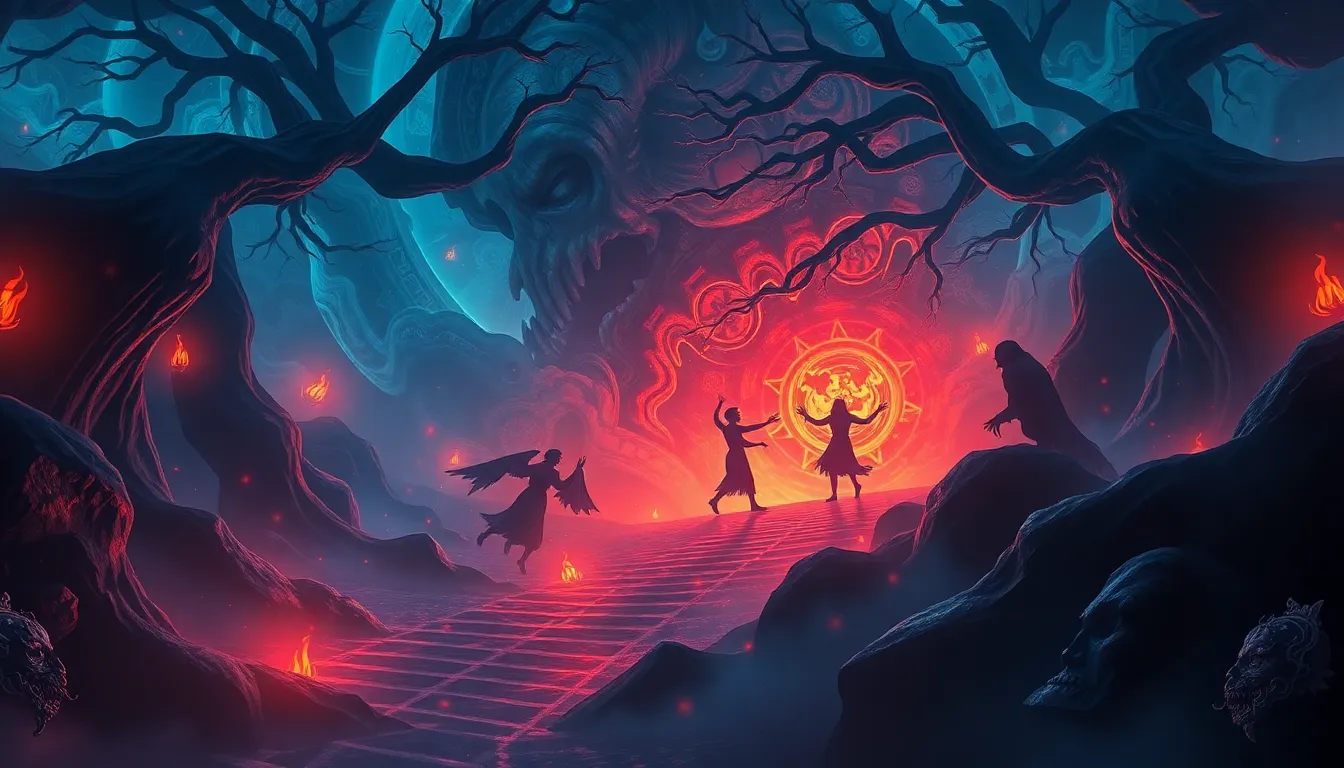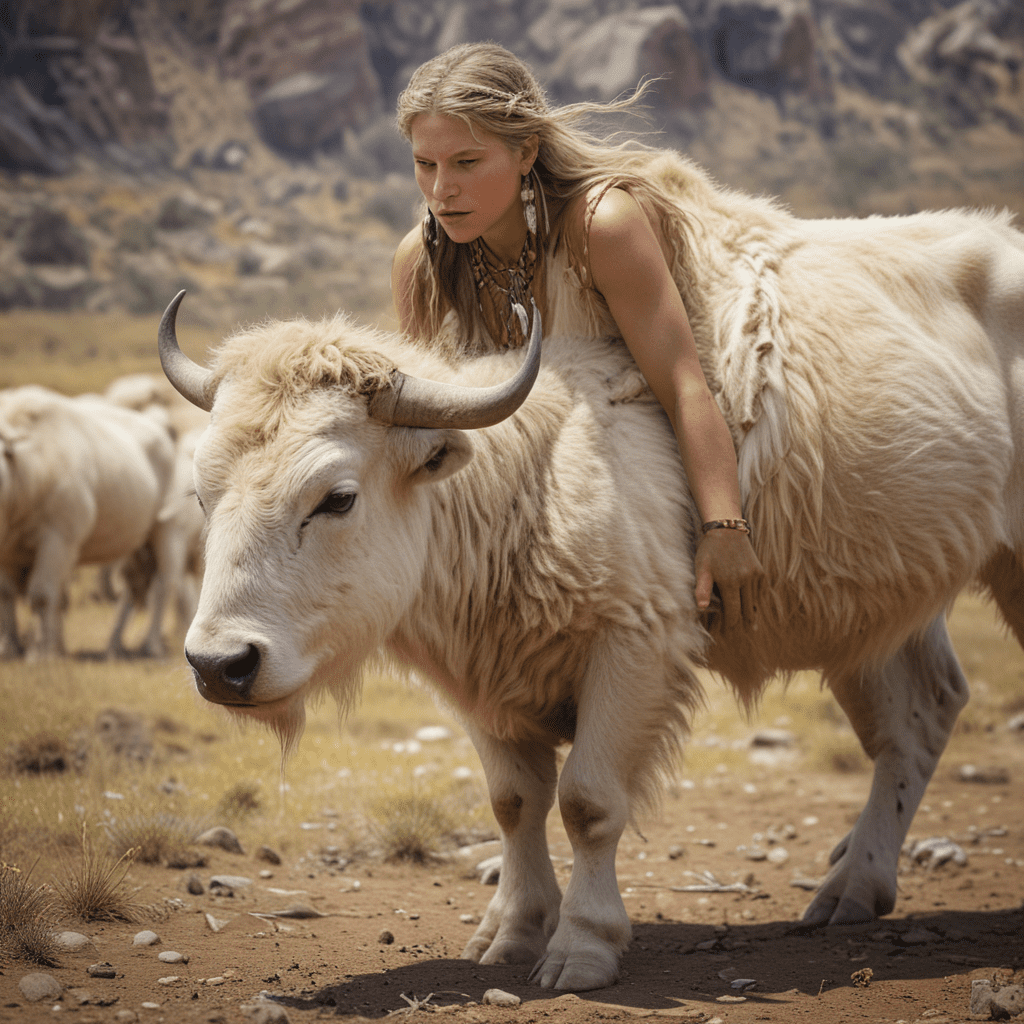Underworld Myths: The Eternal Dance of Life and Death
I. Introduction
Underworld myths are a fascinating aspect of human culture, representing the beliefs and narratives surrounding the afterlife and the realm of the dead. These myths provide insight into how different civilizations have understood the concepts of life, death, and what lies beyond. The importance of life and death in human culture cannot be overstated, as these fundamental experiences shape our worldview, moral frameworks, and spiritual practices.
This article will explore the historical perspectives of underworld myths, common themes found within them, comparative analyses of key underworld deities, and their symbolism in folklore. Additionally, it will examine their representation in modern literature and media, psychological interpretations, associated rituals, and their influence on contemporary spirituality.
II. Historical Perspectives on the Underworld
A. Ancient Civilizations and Their Views on the Afterlife
Throughout history, various civilizations have developed rich and complex beliefs about the afterlife. Here are a few prominent examples:
1. Mesopotamia
In ancient Mesopotamia, the afterlife was seen as a dreary existence in the underworld, known as Kur. The dead were believed to lead a shadowy and sad life, with little joy or purpose. This perspective emphasized the importance of proper burial rites, as the living sought to ensure a safe passage for the deceased.
2. Ancient Egypt
Contrastingly, the ancient Egyptians held a more optimistic view of the afterlife. They believed in a realm called the Field of Reeds, where the souls of the righteous could enjoy eternal bliss. The journey to this paradise involved a judgment process, where the heart of the deceased was weighed against the feather of Ma’at, the goddess of truth and justice.
3. Greek and Roman Beliefs
Greek and Roman mythologies presented a multifaceted view of the afterlife. The Greeks recognized multiple realms, including the Elysian Fields for the virtuous and Tartarus for the wicked. The Romans adopted these beliefs and added their own interpretations, emphasizing the role of ancestor worship and the importance of funerary practices.
B. Evolution of Underworld Concepts Through Time
The understanding of the underworld has evolved over time, influenced by cultural exchanges, philosophical developments, and changing societal values. From ancient rituals to modern interpretations, the imagery of the underworld reflects humanity’s ongoing quest to comprehend life, death, and existence beyond the grave.
III. Common Themes in Underworld Myths
A. The Journey of the Soul
A prevalent theme in underworld myths is the journey of the soul after death. Many cultures depict this journey as a transition, often involving trials or challenges that the soul must face before reaching its final destination.
B. Judgment and Penalty
Another recurring theme is the concept of judgment. Many myths feature a divine figure who assesses the actions of the deceased, leading to rewards or punishments based on their moral conduct during life. This theme serves both as a cautionary tale and a moral guide for the living.
C. Rebirth and Reincarnation
Some cultures incorporate ideas of rebirth and reincarnation, suggesting that the soul undergoes cycles of death and rebirth. This cyclical view of existence emphasizes the interconnectedness of life and death, and the potential for personal growth and transformation through multiple lifetimes.
IV. Comparative Analysis of Underworld Deities
A. Hades (Greek Mythology)
Hades, the god of the underworld in Greek mythology, presides over the realm of the dead. He is often depicted as stern but fair, ensuring that souls receive their due based on their earthly deeds.
B. Osiris (Egyptian Mythology)
Osiris, the Egyptian god of the afterlife, symbolizes resurrection and regeneration. His myth involves his death and resurrection, emphasizing themes of renewal and the eternal cycle of life.
C. Yama (Hindu Mythology)
In Hindu mythology, Yama is the god of death and the underworld. He guides souls to their next destination and is associated with the concept of karma, where one’s actions dictate their fate in the afterlife.
D. Hel (Norse Mythology)
Hel, in Norse mythology, rules over the realm of the same name, where those who did not die gloriously in battle go. She is depicted as a being that embodies both life and death, showcasing the duality of existence.
E. Commonalities and Differences Among Deities
Despite their differences, these underworld deities share common themes of judgment, the journey of the soul, and the significance of moral behavior in life. They reflect the cultural values and beliefs of their respective societies.
V. Symbolism of the Underworld in Folklore
A. Natural Elements and the Underworld
The underworld is often symbolized through natural elements such as darkness, water, and earth. These elements represent the unknown and the mysteries of death.
B. Underworld as a Metaphor for Transformation
Many cultures view the underworld as a place of transformation, where the soul undergoes significant changes. This metaphorical aspect highlights the idea that death can lead to rebirth and new beginnings.
C. The Role of Shadows and Light
The interplay of shadows and light in underworld myths symbolizes the duality of existence—life and death, hope and despair. This imagery enriches the narrative and provides deeper insights into the human experience.
VI. The Underworld in Modern Literature and Media
A. Depictions in Classic Literature
Classic literature often includes themes of the underworld, with notable examples such as Dante’s “Inferno,” which explores the nine circles of Hell and the consequences of human actions.
B. Influence on Contemporary Fiction and Film
Modern narratives continue to draw on underworld themes, with films and books using the motif of the afterlife to explore existential questions and moral dilemmas.
C. The Underworld Archetype in Popular Culture
Popular culture frequently incorporates the archetype of the underworld, seen in various genres from fantasy to horror, illustrating its lasting impact on storytelling.
VII. Psychological Interpretations of Underworld Myths
A. The Underworld as a Reflection of Human Fear
The underworld embodies humanity’s fear of death and the unknown, prompting individuals to confront their mortality and the consequences of their actions.
B. The Role of Myth in Coping with Mortality
Myths about the underworld provide frameworks for understanding death, offering comfort and guidance in navigating the complexities of life and loss.
C. Jungian Perspectives on the Underworld
From a Jungian perspective, the underworld represents the unconscious mind, where repressed fears and desires reside. This exploration of the psyche can lead to personal growth and self-understanding.
VIII. Rituals and Practices Associated with the Underworld
A. Funerary Rites Across Cultures
Funerary rites vary significantly across cultures, reflecting beliefs about the afterlife and the treatment of the deceased. Common practices include:
- Burial or cremation
- Offerings and sacrifices
- Rituals to guide the soul
B. Festivals Celebrating Death and the Afterlife
Many cultures celebrate festivals that honor the dead, such as Dia de los Muertos in Mexico, where families remember and celebrate the lives of their deceased loved ones.
C. Modern Practices and Their Ancestral Roots
Modern spiritual practices often draw from ancestral rituals, blending traditional beliefs with contemporary understanding of life and death.
IX. Underworld Myths and Their Influence on Modern Spirituality
A. Neo-Paganism and the Reclamation of Underworld Myths
Neo-Pagan movements frequently revive and reinterpret underworld myths, emphasizing their relevance to contemporary spirituality and personal growth.
B. Shifts in Understanding Life and Death in Contemporary Spirituality
As society evolves, so too does the understanding of life and death, with many seeking to integrate ancient wisdom into modern spiritual practices.
C. The Role of Storytelling in Spiritual Practices
Storytelling remains a vital aspect of spiritual practices, allowing individuals to connect with their heritage and explore the deeper meanings of existence.
X. Conclusion
In conclusion, underworld myths encapsulate a rich tapestry of beliefs and narratives that reflect humanity’s ongoing quest to understand life



